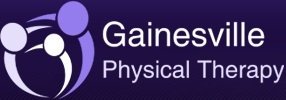Spinal Therapy / Scoliosis
Adult scoliosis is the abnormal curvature of spine giving the spine an “S” or “C” shape in a skeletally mature person. Larger curves cause discomfort while the smaller curves do not cause any problems. In most cases, the exact cause remains unknown. However adult scoliosis can develop as a result of:
- Untreated childhood scoliosis
- Inherent, age-related changes occurring in the body
- Certain diseases affecting the spine
Symptoms of adult scoliosis may include the following:
- Uneven shoulder- one shoulder is more prominent and in raised position than the other
- Back pain
- Head is not in centered position
- Abnormal curve of the spine
- Breathing problems
- Lethargy
Children with scoliosis have some typical physical signs, which include:
- A bulge or hump on one side of the back which appears when bending forward
- Curvature of the spine laterally
- Uneven shoulders and hips
Pain is the predominant symptom in patients suffering from degenerative scoliosis. A compression of the spinal nerve root can result in lower limb weakness along with numbness or tingling sensation. This may hamper coordination and balance with a difficulty in movement, standing or sitting. Occasionally, compression of the lower spinal nerves can also lead to difficulty in urination and defecation. This requires immediate medical care.
Degenerative scoliosis can lead to physical deformities such as humpback, prominence of the rib, altered gait, tilting of the trunk to one side and spinal instability and rigidity.
Diagnosis
Spine surgeons are well experienced in managing back problems. In case of any disorder affecting the spine, contact a specialist immediately as the right diagnosis is crucial for devising an effective treatment plan.
A diagnosis of adult degenerative scoliosis involves:
- A detailed medical and family history of the patient
- Neurological examination
- Testing of reflexes to evaluate muscle weakness, sensitivity, and other signs of neurological injury
- Physical examination to evaluate movements at the spine and leg length measurements
Diagnostic imaging techniques such as X-rays, CT scan, MRI scans and myelography may also be used to improve the accuracy of diagnosis.
Treatment
In some patients simple life style modifications such as improved nutrition, smoking cessation and regular exercise may be sufficient for the management of scoliosis. A few patients may respond to non-surgical methods such as analgesics and anti-inflammatory medications, braces, spinal injections, and physical therapy.
Physical therapy is advised after surgery to help the spine grow normally. Physiotherapists evaluate the posture, muscle strength, and flexibility and then design exercise program suitable for patient that helps to control pain and improve the disability.





